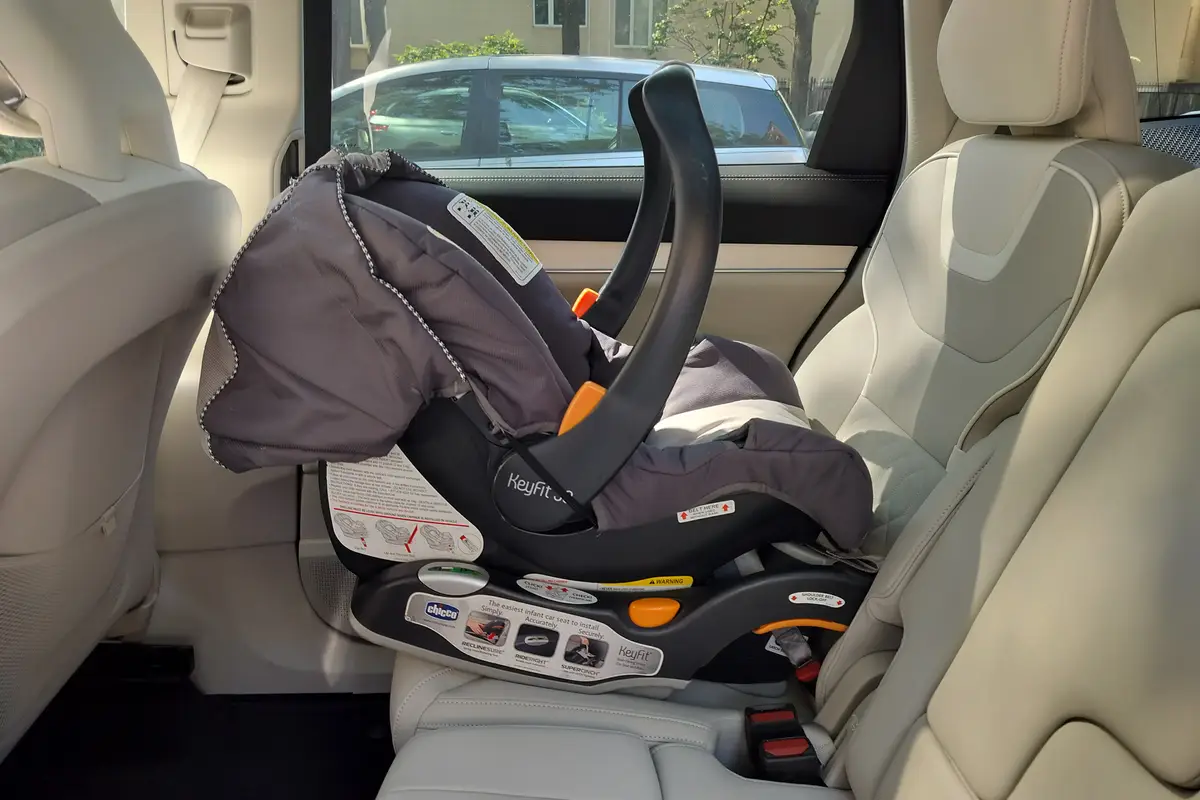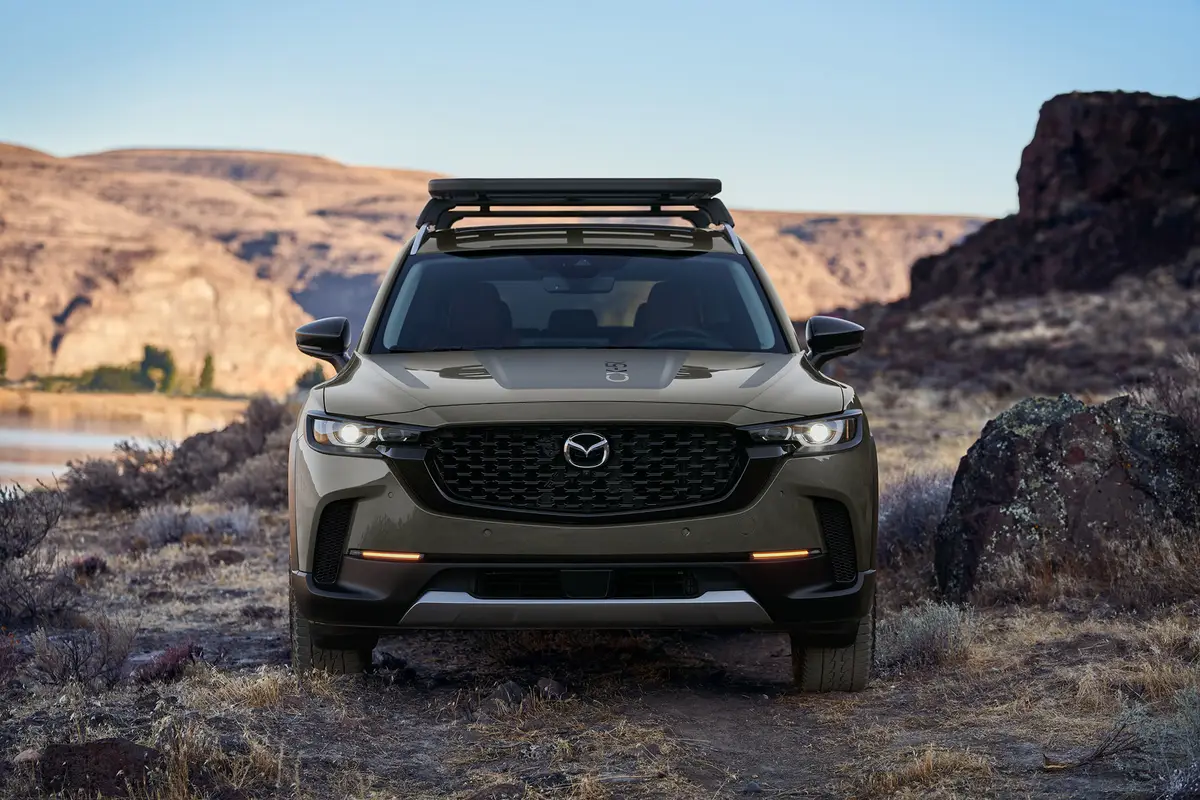chicagotribune.com's view
“Pop top“ no longer refers just to the manner in which you open yourfavorite beverage container.
It now refers as well to the means by which you remove the roof of yourtwo-seat Honda Civic del Sol coupe so you can enjoy open-air motoring.
The del Sol (which means “of the sun“ in Spanish-simple and to thepoint and a lot more melodic than the Nissan Altima) features a removablealuminum roof. Press a button on each side, pull a lever, and the 23-pound topeasily is lifted away and ready to store in the trunk.
The trunk contains a storage rack for the top so you don`t have to leaveit lying alongside the driveway. Press a couple of levers, and it`s lockedsecurely in place without rattling.
With the top down . . . make that with the top open, you can enjoy thesun, the moon, the stars, the pollution (Arizona readers can skip the lastword) just as if you were in a drop top and not a pop top.
Why pop and not drop?
With a metal top secured in place, there`s greater structural integrityfor the car than if you had only a layer of vinyl or canvas serving as theroof. Also, a metal top provides considerably more security than canvas orvinyl to safeguard those packages you left on the seat while you went backinto the mall to shop.
The pop top basically is a one-piece T-bar roof panel.
The advantages of pop versus drop are that you have no rear plasticwindow to worry about cracking from countless folds, no canvas or vinyl toclean and keep pliable so it doesn`t crack, no wind noise when the top is up, no assortment of mechanisms to fool with to raise or lower the top, and theability to drive it year-round, not just in certain seasons to avoid anaccumulation of snow and ice on the soft top.
The disadvantage is that you have to go through the motions of removingand storing rather than simply pushing a button and watching the top go up or down.
With the top off, there`s still a thick roof strip (Honda doesn`t referto it as a built-in roll bar) that houses a glass backlight or rear window.When the top is removed and the windows are up, very little wind or breezepenetrates the passenger cabin. With the windows down there isn`t much wind orbreeze, either. The angle of the windshield and the size and angle of the roofbar and rear glass window act as an air dam to shield occupants. Honda callsit “managed air flow.“
It helps, too, that you sit low in the del Sol, almost as if in a valley, so that most wind disturbances pass right over you.
To further contribute to the del Sol`s open-air motoring, Honda borroweda page from Mercury of decades ago by offering a power rear window that can bemotored down to let the breeze pass through and at the same time relieve thepassenger cabin of stale air or tobacco smoke. Nice touch.
The del Sol Si is a fun-to-drive little two-seater, thanks to the peppy125-h.p., 1.6-liter, 16-valve four-cylinder engine. Our test car was teamedwith the standard 5-speed manual, a short throw type unit that was slipperysmooth-as most Honda manuals have proven to be.
The suspension system adds to the fun. The four-wheel double wishbonesuspension provides exceptional ride and handling for a car with only a 93.3- inch wheelbase. You`d expect to bounce up and down and sideways a lot inthe two-seater, but the car hugs the road and the suspension allows foraggressive maneuvering without easing off the gas pedal. Power-assisted rackand pinion steering, front stabilizer bar, specially valved shocks and 14-inchtires complete the package.
The base S version, in contrast, is powered by a 1.5-liter, 102-h.p., 16- valve four-cylinder and comes only with 13-inch tires. Power steering isavailable on the S only when you purchase optional automatic transmission. TheS is more mileage-minded than the Si and is rated at 34 m.p.g. city/38 m.p.g. highway with manual, 30/36 with automatic, versus 29/33 manual , 27/34 withautomatic for the Si.
Other notable features of the Si we drove were convenient location of all controls, especially placement of the cruise control, rear defroster andhazard light buttons halo-style across the top of the instrument panel; sidebolsters on the seats to hold you in place in sharp turns or corners; a pairof Corvette-like mini-stowage bins behind the seats; a spacious trunk that canhold nine bags of groceries, even with the roof storage rack; and unique side-window rubber strips at the junction of the roof and door that hold theglass in place to prevent wind noise. The door opens and closes at an anglethat allows the glass to slip under/out of the strip without obstruction.Another nice touch.
That is not to say, however, that the del Sol is flawless. The angle ofthe windshield and rooftop is such that during or immediately after a rain, ifyou crack open the side window you might be fooled into reaching for bath soapand washcloth. Water drains from the roof into the passenger cabin. A driprail is needed to keep occupants dry; but it`s difficult to add one to aremovable roof panel.
Also, because the roof panel needs to be removed on occasion, Honda hadto skimp on the size of the sun visors. The visors are very small pieces ofplastic that can`t be flipped to block glare from the side.
Two other annoyances have nothing to do with the roof. One is that thedel Sol doesn`t offer anti-lock brakes. This is a fun-to-drive, aggressivelynatured sport coupe that more than tempts you to give the pedal a little extrapressure in corners and turns, not to mention the long straightaways.
It`s a small two-seater in which occupants don`t have a lot of size orweight wrapped around them. It`s a car aimed at youth or the young at heart,the folks who sometimes take chances. Those are the reasons ABS should beavailable in this car.
But to keep the cost down, it wasn`t offered.
From purely a practical standpoint, if ABS costs $700, what would youthink replacing a fender and hood would cost in comparison? More than $700. Atleast a driver-side air bag is standard.
The other gripe is that the del Sol comes in two trim levels, S and Si.Yet you won`t find the letters “S“ or “Si“ anywhere on the car. There`sroughly a $2,000 difference between the base S and uplevel Si. For $2,000,we`d like to see Si somewhere on the car, either as a decal or screwed-onchunk of metal.
Honda says the Si is distinguishable by its alloy wheels. Our concern isthat five, six or seven years down the road, when someone is about to buy aused del Sol, the buyer pays $1,000 more than he or she should, mistakenlybelieving it`s the uplevel model.
That`s a minor point to be sure, but we remember when people bought 10-year-old Volkswagen Beetles thinking they were getting 5-year-old Beetles,because only aficionados could tell one from the other.
Other gripes include place ment of the dual cupholders in the centerarmrest behind the driver, making usage difficult; a bit of a tinny sound whenslamming the door, which runs counter to the solid feeling you get when thevehicle is in motion; and such low seating levels that the headlights fromtrailing vehicles, especially semis, are annoying at night.
In addition to items already mentioned, the Si has as standard cruisecontrol, power 4-wheel disc brakes, body-color power mirrors and bumpers,quartz digital clock, adjustable steering column, tachometer, carpeting, powerwindows, coinholder, rear-window defroster, intermittent wipers and trunklight.
The Si starts at $15,000 with manual, $15,750 with automatic. The Sstarts at $13,200 with manual, $14,180 with automatic.
Our main concern with del Sol is that Honda not spoil it like Toyota didthe MR2 by moving from a low-price economy car with sports-like performance toa high-price performance car with a luxury-car price tag. With the del SolSi`s base price at $15,000 to $15,750, it already stands at the border ofbeing out of reach for some.
Latest news



